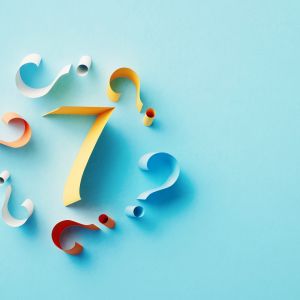Billing compliance protects both patients and providers.
Patients want assurance that the bills they receive completely and accurately reflect what occurred during the visit, test, or procedure, but for physicians and hospitals, it’s more nuanced. They want to maximize the legitimate reimbursement to which they are entitled while avoiding audits that can reclaim revenue from last month to many years ago.
Maintaining an effective program can be a moving target. Rules and regulations constantly change, billing and coding personnel leave, and hospitals onboard new physicians. Consider the following questions to evaluate the effectiveness of your program.
1. Why Do I Need a Billing Compliance Program?
Under the Affordable Care Act, physicians who treat Medicare and Medicaid patients are required to have a compliance program in place. Such programs are meant to safeguard patient privacy and safety, prevent fraud and abuse, maintain regulatory compliance, and ensure appropriate billing.
Rather than just tick the box to say you have one, a legitimate program should bring together the people, processes, and technology to ensure standards are met, risks are remediated quickly, and everyone in the organization understands the importance of proper billing.
2. What Should an Effective Program Include?
According to the Office of Inspector General (OIG), a proper billing compliance program should encompass the following:
- A designated compliance officer or contact
- Internal monitoring and auditing
- Compliance and practice standards
- Appropriate training and education
- Appropriate response to detected offenses
- Corrective action plans
- Open lines of communication with employees
- Well-publicized guidelines for enforcing disciplinary standards
As you can see, none of these are one-and-done objectives, making compliance an ongoing activity.
3. Which Departments Should Participate?
Billing compliance doesn’t fall under the purview of any one department, but rather is a cross-functional endeavor. To solve systemic challenges and drive outcomes with greater impact, billing compliance teams with representatives from coding, revenue integrity, revenue cycle, clinical documentation integrity (CDI), IT, and others must partner across the enterprise.
Just as departments should not be siloed, neither should the data used to code, create bills, and conduct audits. Organizations should employ technology that can roll up data from various department into a single dashboard, which makes compliance and auditing activities easier to perform, with fewer manual processes and errors.
4. How Important Are Audits?
Auditing to ensure compliance is a vital success factor for organizations to preserve revenue and to respond quickly, accurately, and completely to external audit requests. Prospective auditing can help ensure bills are properly coded on the front end. Retrospective audits can help pinpoint the source of recurring errors to improve overall performance. Both types of audits are on the rise, according to MDaudit research, with prospective audits increasing 31% in 2022 from the previous year and retrospective audits 28% higher over the same period.
With the end of the COVID-19 public health emergency, the pace of external audits from private payers, Medicare, and Medicaid is expected to pick up. In January, the Centers for Medicare & Medicaid Services (CMS) finalized a rule expected to wring $4.7 billion from Medicare Advantage (MA) plans over the next decade by conducting audits back to 2018. Federal agencies overall are stepping up their efforts, spending more money on integrity programs and using artificial intelligence and machine learning to audit more claims.
5. How Do I Ensure Audit Quality?
Ensuring quality audits requires the interplay of people, processes, and technology. Data required to perform audits does not naturally exist in a central location, which makes an advanced audit platform important to aggregate data from disparate sources. However, nearly one-third of organizations still use spreadsheets to manage their audit programs, a manual and error-prone process that makes it difficult to truly understand the audit process across the organization.
Technology also is useful to track coder and clinician performance against internal and external benchmarks to uncover bigger-picture issues and then pinpoint the source of those errors, by coder, clinician, procedure, practice, specialty, and more. Using certified coders is crucial to monitor coding for accuracy, acuity, changes in profile, and changes in E&M codes.
6. How Often Should I Audit and Train?
Audit and training goals will depend on the organization. Ongoing dialogue among stakeholders and the flexibility to adapt to changing scenarios are important success factors. At a minimum, every provider should be audited once a year, with special attention paid to where significant coding deficiencies are discovered. Meet with new providers, conduct a courtesy audit to determine a baseline, and conduct immediate training where applicable. In addition to regular training, conduct ad hoc training when and where needed to reinforce proper coding procedures.
To maintain billing compliance, create processes that incorporate stakeholder feedback to facilitate corrective action and provide additional training. At a minimum, meet monthly with departments to review audit findings and provide updates on adherence to any improvement plans. It may be helpful to generate reports with coding compliance bell curves and other metrics you can present during individual and group meetings.
Don’t forget to audit the auditors. Senior auditors or managers should perform quality assurance on auditors to find and discuss both successful and unsuccessful outcomes.
7. What Role Does Technology Play in Maintaining Compliance?
Leveraging technology that compiles data in a central location and automates many auditing processes can help set up billing compliance programs for success. Conducting audits should be a natural part of the coding and claims processes to help ensure claims accurately reflect the depth and breadth of a patient encounter without overcoding.
Cloud-based technologies with integrated workflows and powerful analytics can enable collaboration and accelerate outcomes. Data from multiple sources of internal and external data — including billing, payment, auditing, market-level costs, and payer data — is used to make strategic decisions to retain at-risk revenues, with close attention paid to overcoding and undercoding, medical necessity, clinical documentation, and bundling-related issues.
To dig further into audit productivity, read 5 Keys to Driving Audit Productivity, Quality and Outcomes where you will discover what’s needed to take your compliance program to the next level.









